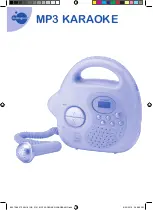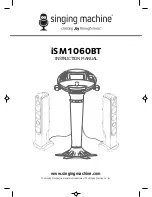
- 8 -
GB
© ESAB AB2012
5
OPERATION
General safety regulations for the handling of the equipment can be found
on page 3. Read through before you start using the equipment!
5.1
Connections and control devices
5.2
Fault Indication Light (Yellow LED) ( ) (Pos 9)
The power source has a fault indication light that operates when one of the following events occur:-
1) Thermal overload - operates when machine has been used beyond its intended duty cycle. Fault
indication resets automatically when the temperature has fallen to a suitable temperature
2) Over/under voltage protection - operates when the mains input voltage exceeds the tolerance of
the machine. Fault indication would need to be reset manually by turning the main switch to off and
then back on again.
3) Internal machine fault - operates if there are faults in the machine. Please contact ESAB Service
technician for assistance.
5.3
Inductance ( ) (Pos 3)
Higher inductance results in a wider weld pool and less spatter. Lower inductance produces a
harsher sound but a stable, concentrated arc.
Control of the inductance is especially important when short arc welding.
5.4
Wire feed speed display / Ammeter (Pos 2)
During preset, the meter will show wire feed speed in m/min. When welding, the meter will show
the welding amperage.
1
Voltmeter
2
Wire feed speed display / ammeter
3
Inductance control ( )
4
Connection for wire feed unit ( )
5
Connection (-)
6
Connection (+)
4
5
6
7
12
11
10
9
8
1
2
3
15
14
13
7
Crater voltage control ( )
8
Crater current control ( )
9
Fault indication light (Yellow LED) ( )
10 Power indication light (White LED)
11 Switch for 2-stroke / 4-stroke (Crater on/off)
12 Gas check / weld mode
13 Mains power supply switch, 1 / 0
14 CO
2
heater regulator socket (110V
ac
)
15 Resettable breaker for heater socket


































